Lao Shan Tang (老山塘) or simply translated to mean Old Shan Tang, is a stall located towards the final quarter of the Shantang Street and tucked away a little hidden from sights near the scenic bridge where most of picturesque shots like these were taken.

The stall is located by the side of the street and not many stopped by, although I caught a few who halted their steps to look at the interesting process of the cake making.
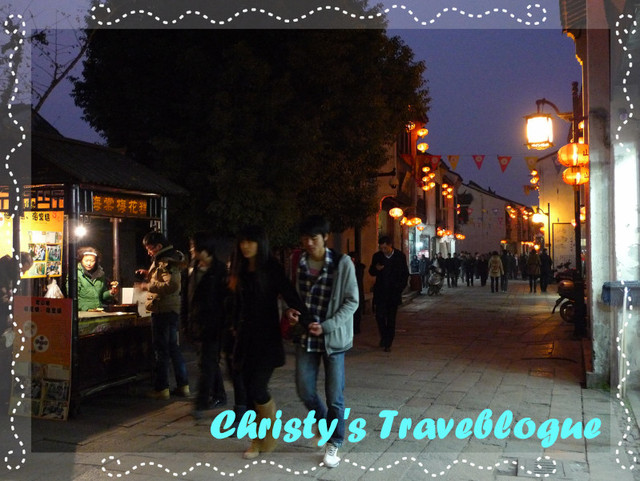
Lao Shan Tang is run by a middle-aged local couple; and it seems that the husband was the one making the cakes.
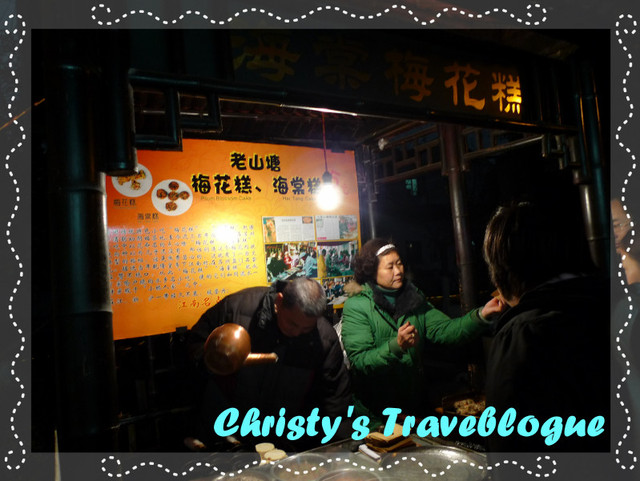
While other restaurants or snack food stalls impress with wide varieties on their menu, Lao Shan Tang only has two types of cakes to offer; the Plum Blossom Cake(梅花糕) and Hai Tang Cake (海棠糕)
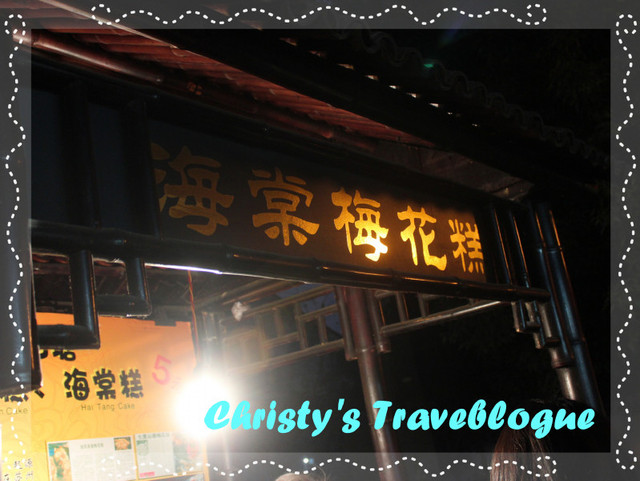
There may not be lots to offer from their stove, but the charm of this old stall is in its long time existence and the history of the cakes which dated back to as far as more than 300 years, earned its spot in the newspapers and media as proudly featured here on the menu.
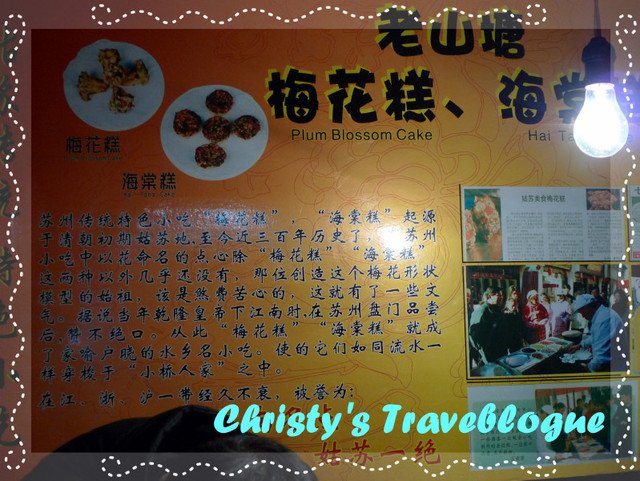
The cakes probably had their history described here; and it is interesting to those of you who are unable to read Chinese, they are actually flower-themed cakes.
The Plum blossom and Hai Tang are both flowers popular in China; and the history of these cakes did not lie only in its origin (from flowers) but also in the place from where it originated.
Mei Hua Gao (梅花糕), or Plum Blossom Cake started its story since the Qing Dynasty, where it gained its stronghold fame then after Emperor Qianlong, one of the most renowned rulers in the dynasty, tasted and sung praises for this humble cake.
The Emperor was on one of his incognito trips through the southern part of the Yangtze River when he sampled an aromatic local snack which had its shape like a plum blossom flower. The pleasantly sweet yet light crisp and non-greasy taste of the cake won the Emperor's heart and he liked it so much that he gave the name of the Plum Flower Cake to the snack and given it much glory it deserved and the name stood until this day.
It was said that the Emperor even thought the cake exceeded the qualities of snacks served from the Imperial kitchen and it quickly became a favorite snack following reports of the royal encounter with it.
The Plum Blossom Cake takes its flour form above the mould shape of the flower; although it may not be apparent from the top as shown in the picture here.
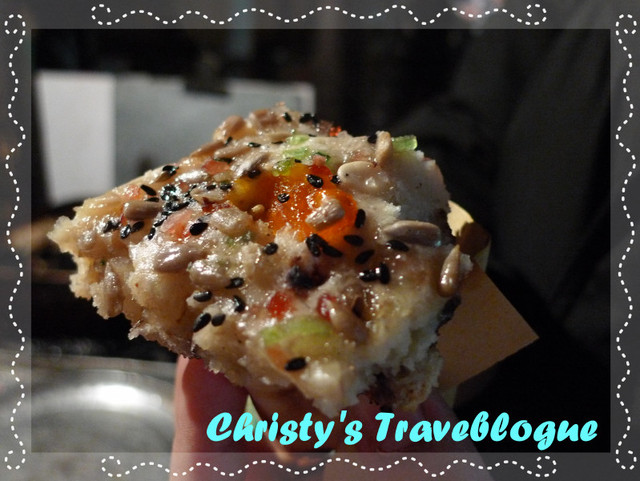
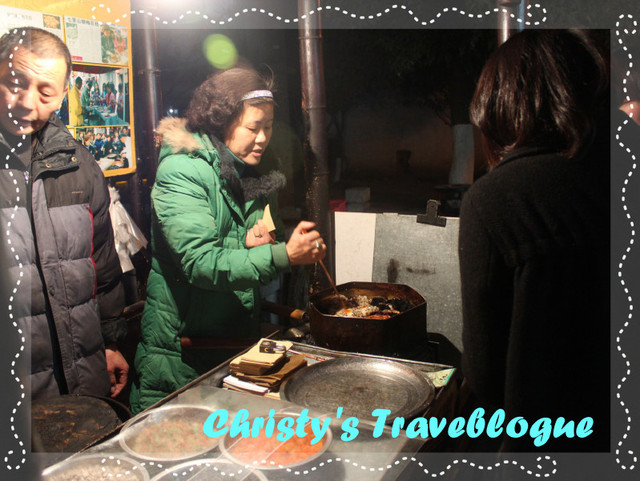
The cake was made of flour baked on the stove and then sprinkled with sesame, candied tangerines and winter melons, and a few sweet condiments, giving it that light sweet flavor yet pleasantly crispy and not greasy at all, as how the Emperor described it centuries ago.
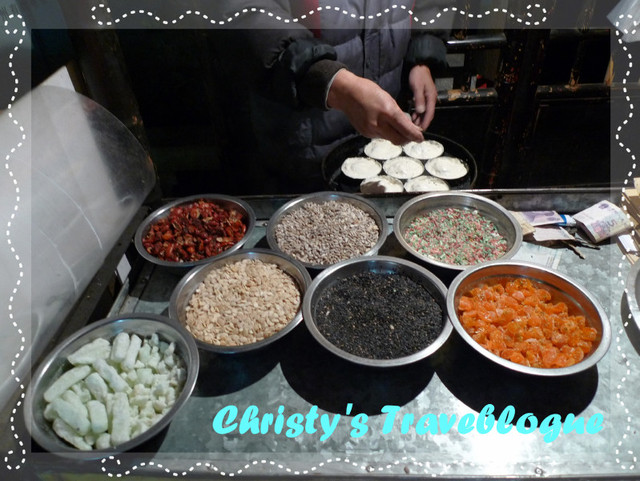
The Hai Tang cake(海棠糕), was also made of the same type of mix although with a different type of flower mould and there is not much sources to trace on the origin of this cake.
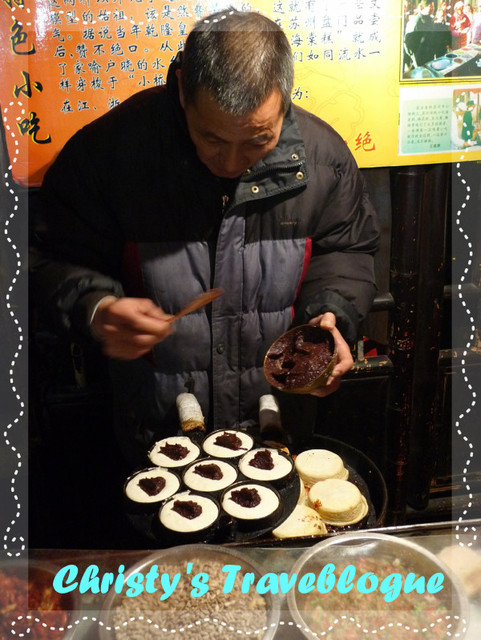
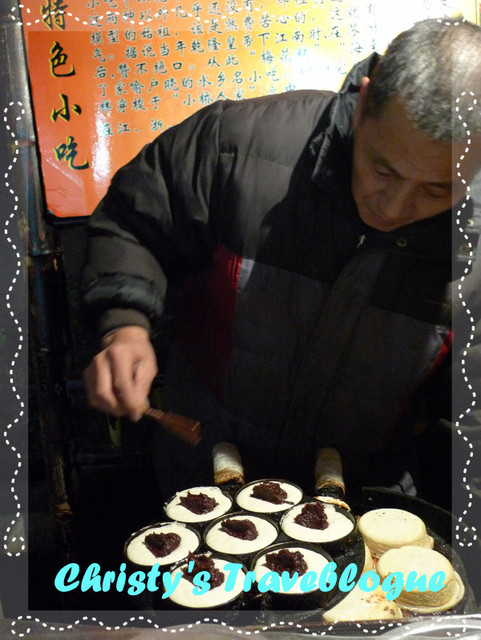
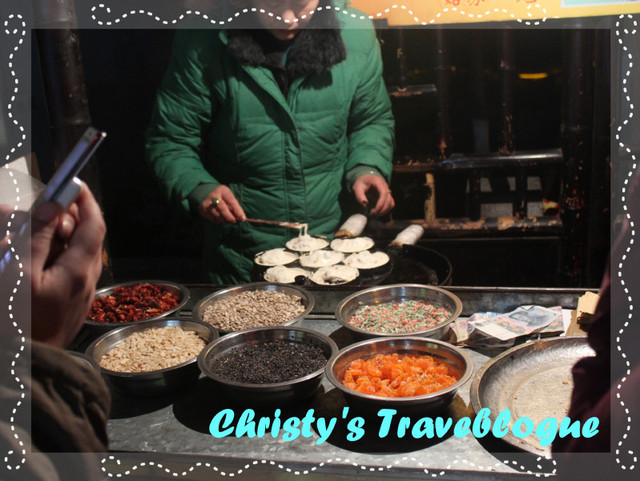
However, this snack is still mentioned to be a traditional snack in Qibao Town and also a delicacy on the streets of Shanghai with its simple recipe of light crisp of the cake covered with thick brown sugar and red bean.
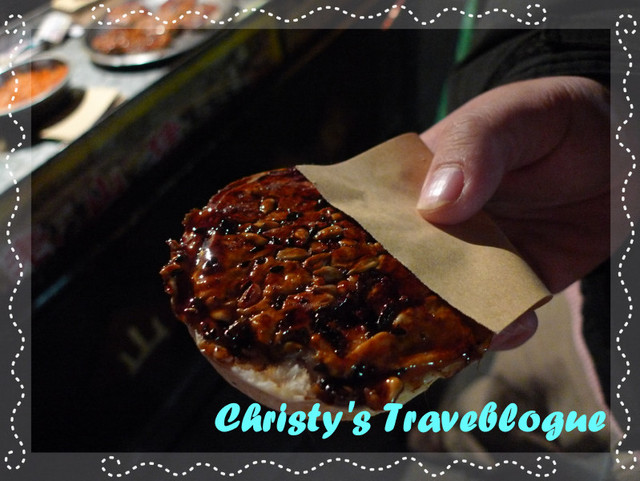
Costing only about RMB5 (~MYR2.50), this is a reasonably priced snack and the type that I like; especially when it is hot from the stove and snuggles warmly in the hands against the chill of the weather.
The best part is the subtlety of the couple who runs the stall; though not one with many words, they certainly did not wave their fame in their customer's faces as they humbly stayed under their aging shack of a stall by the streets and under a tree while quietly busying their hands making the cakes individually.
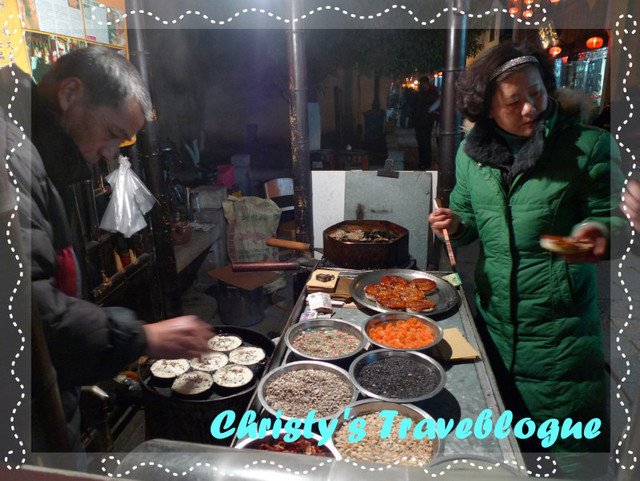
I would definitely recommend a taste of this cake, and also to enjoy a taste of a historical snack of China; just like how one would take in the charm of the lovely scenic streets of Shantang.
The two are definitely the treasures of Jiangnan!:)

No comments:
Post a Comment